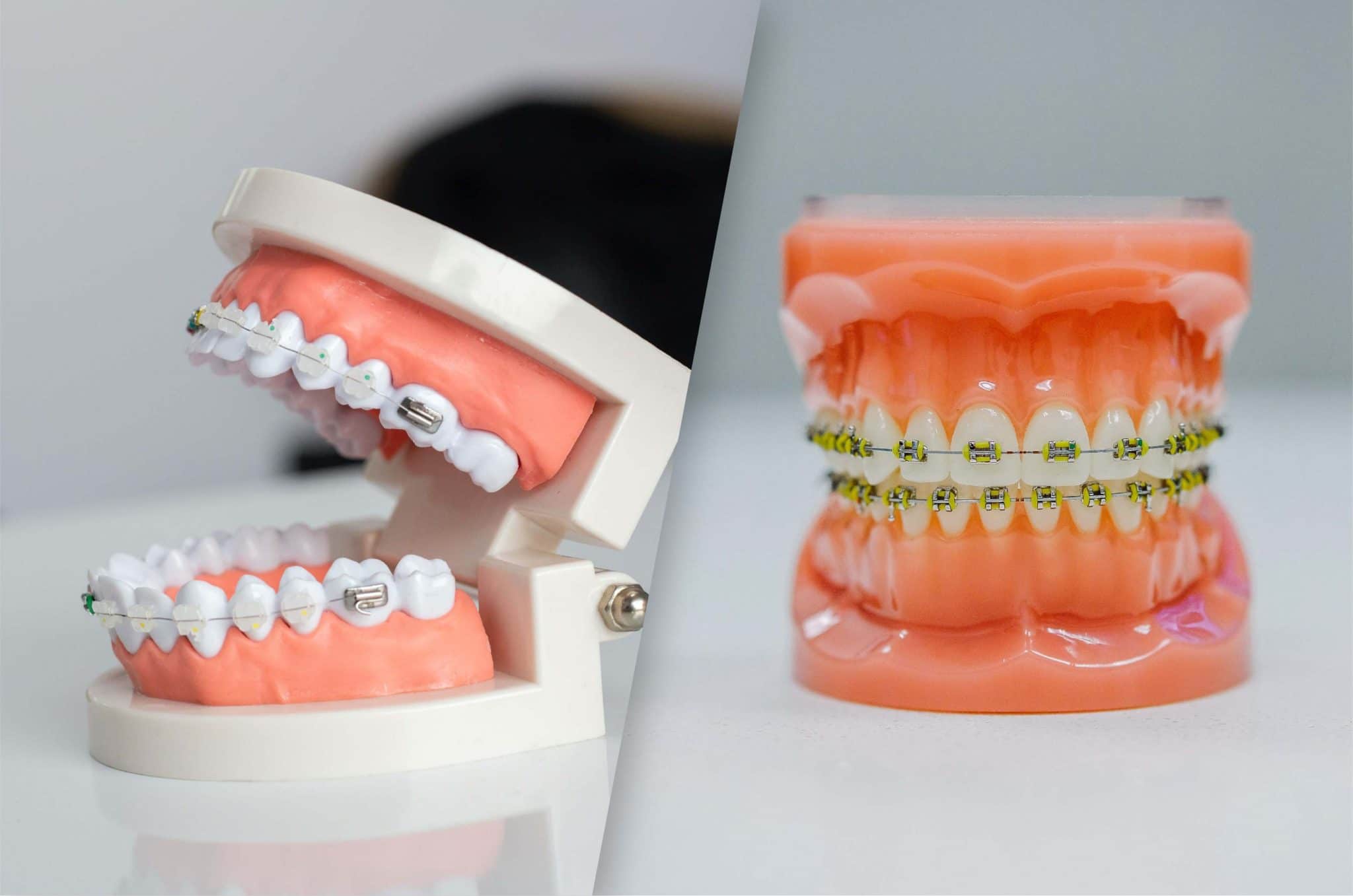Ceramic braces are a popular
substitute for traditional metal braces. An orthodontist
will use them, like regular braces, to help realign and straighten teeth. If
the two braces do the same job, the question that arises is What’s the
difference between the two types of braces.
What are Ceramic Braces?
Ceramic braces are very similar to
typical metal appliances, except they are composed of a tooth-colored ceramic
substance that makes them less noticeable to the human eye.
What Are Some Advantages of
Ceramic Braces?
According to some patients, Ceramic
braces are more comfortable than metal braces since they do not irritate the
gums as much. In addition, ceramic braces are strong and durable, and they can
withstand a lot of pressure. Ceramic braces are typically available with
tooth-colored or translucent arches, making them virtually invisible to the
human eye.
What Exactly Are Metal Braces?
Metal orthodontics is the
most widespread and well-known form of teeth straightening on the market today.
While metal braces have been used for more than a century, their design has
improved, allowing for a wide range of complex corrections. However, they are
still helpful for teeth straightening and correcting over and underbites. Metal
brackets are attached to the outside of your teeth in traditional braces. They
are prominent because they are attached to the outside of the teeth.
What Are Some of the Benefits of
Using Traditional Metal Braces?
Because of the strength of
stainless steel, traditional braces can make significant modifications.
Traditional braces are still the least expensive alternative for tooth
straightening, perhaps their most significant orthodontic advantage.
What's the Difference?
Ceramic and metal braces both use a
similar design to achieve straight teeth and a healthy smile, but the main
difference is the substance used to make the brackets. Metal braces employ
medical-grade stainless steel brackets, whereas ceramic braces use
polycrystalline alumina that can be clear or the same color as your tooth.
Because stainless steel is quite visible against the white of your teeth,
ceramic brackets are desirable due to their discreet appearance. Because the
brackets can be translucent, they are also known as clear braces. However,
ceramic brackets are also more likely to discolor than traditional braces
because of their lighter hue. Users wearing ceramic or transparent braces
should avoid dark meals and beverages like coffee, tea, ketchup, curries, and so
on. All these substances have the potential to stain or discolor the clear or
tooth-colored brackets. To lessen the chance of discoloration, sip with a straw
or clean your teeth immediately afterward. Finally, because the frames are made
of a more delicate and expensive material, ceramic or transparent braces nearly
usually cost more than metal braces.
Most people associate braces with a
gorgeous smile. They can, however, help to ease and avoid long-term health
concerns. Teeth that are crooked or crowded are difficult to clean and
preserve, leading to tooth decay, gum disease, and even tooth loss. In
addition, a poor jaw or tooth alignment can result in abnormal tooth wear,
inability to chew efficiently, and undue stress on the gum tissue and bone that
support your teeth. Braces can improve the appearance and function of your
teeth while also making them easier to clean. If you are ready to talk about
braces for yourself or your child and have the best braces look no further, don't
hesitate to contact us for the best braces dentist in Dubai.
Ceramic braces are a popular
substitute for traditional metal braces. An orthodontist
will use them, like regular braces, to help realign and straighten teeth. If
the two braces do the same job, the question that arises is What’s the
difference between the two types of braces.
What are Ceramic Braces?
Ceramic braces are very similar to
typical metal appliances, except they are composed of a tooth-colored ceramic
substance that makes them less noticeable to the human eye.
What Are Some Advantages of
Ceramic Braces?
According to some patients, Ceramic
braces are more comfortable than metal braces since they do not irritate the
gums as much. In addition, ceramic braces are strong and durable, and they can
withstand a lot of pressure. Ceramic braces are typically available with
tooth-colored or translucent arches, making them virtually invisible to the
human eye.
What Exactly Are Metal Braces?
Metal orthodontics is the
most widespread and well-known form of teeth straightening on the market today.
While metal braces have been used for more than a century, their design has
improved, allowing for a wide range of complex corrections. However, they are
still helpful for teeth straightening and correcting over and underbites. Metal
brackets are attached to the outside of your teeth in traditional braces. They
are prominent because they are attached to the outside of the teeth.
What Are Some of the Benefits of
Using Traditional Metal Braces?
Because of the strength of
stainless steel, traditional braces can make significant modifications.
Traditional braces are still the least expensive alternative for tooth
straightening, perhaps their most significant orthodontic advantage.
What's the Difference?
Ceramic and metal braces both use a
similar design to achieve straight teeth and a healthy smile, but the main
difference is the substance used to make the brackets. Metal braces employ
medical-grade stainless steel brackets, whereas ceramic braces use
polycrystalline alumina that can be clear or the same color as your tooth.
Because stainless steel is quite visible against the white of your teeth,
ceramic brackets are desirable due to their discreet appearance. Because the
brackets can be translucent, they are also known as clear braces. However,
ceramic brackets are also more likely to discolor than traditional braces
because of their lighter hue. Users wearing ceramic or transparent braces
should avoid dark meals and beverages like coffee, tea, ketchup, curries, and so
on. All these substances have the potential to stain or discolor the clear or
tooth-colored brackets. To lessen the chance of discoloration, sip with a straw
or clean your teeth immediately afterward. Finally, because the frames are made
of a more delicate and expensive material, ceramic or transparent braces nearly
usually cost more than metal braces.
Most people associate braces with a
gorgeous smile. They can, however, help to ease and avoid long-term health
concerns. Teeth that are crooked or crowded are difficult to clean and
preserve, leading to tooth decay, gum disease, and even tooth loss. In
addition, a poor jaw or tooth alignment can result in abnormal tooth wear,
inability to chew efficiently, and undue stress on the gum tissue and bone that
support your teeth. Braces can improve the appearance and function of your
teeth while also making them easier to clean. If you are ready to talk about
braces for yourself or your child and have the best braces look no further, don't
hesitate to contact us for the best braces dentist in Dubai.





